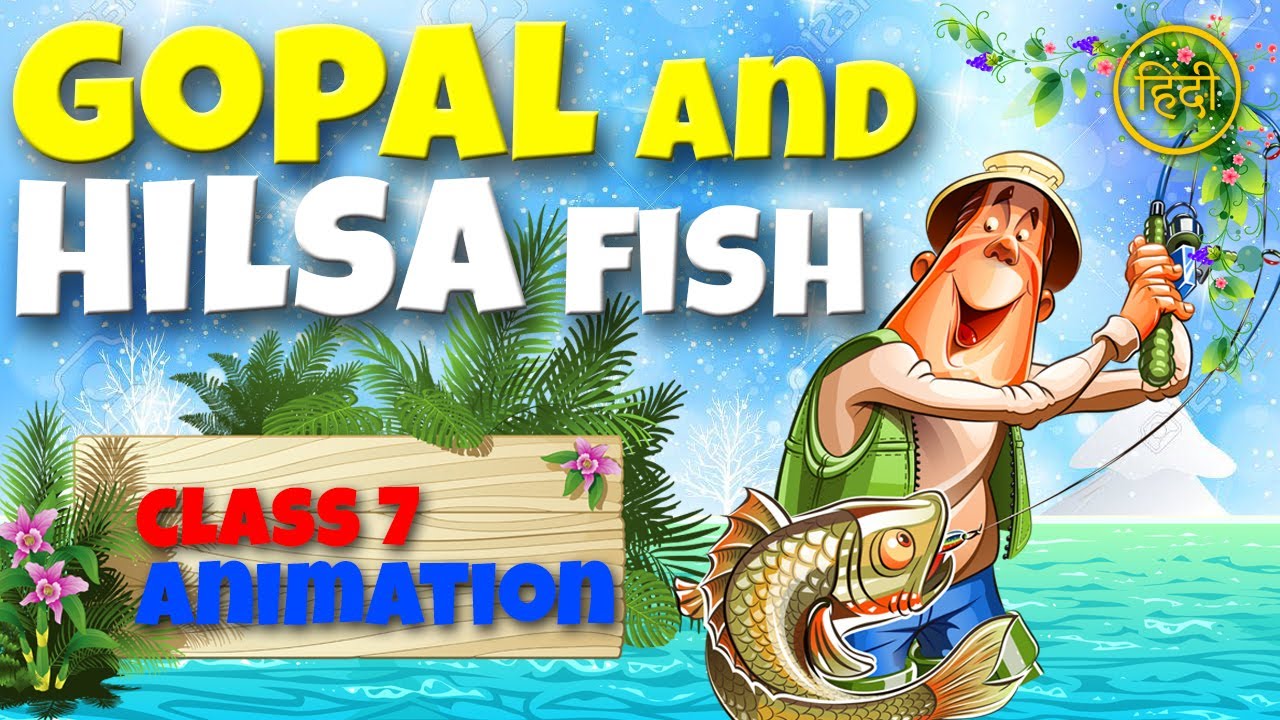
About Lesson
“Gopal and the Hilsa-Fish”
Introduction:
- The chapter “Gopal and the Hilsa-Fish” is a humorous story from the NCERT Class 7 English book “Hornbill.”
- It revolves around Gopal, a clever and witty courtier, who is tasked with a seemingly impossible challenge by the king.
Key Points:
-
Setting the Scene:
- It is the season of Hilsa fish, and everyone in the kingdom is talking about it.
- The king is annoyed by the obsession with Hilsa fish and wants to see if anyone can divert the people’s attention.
-
The Challenge:
- The king challenges Gopal to buy a Hilsa fish and bring it to the palace without anyone talking about the fish.
-
Gopal’s Plan:
- Gopal accepts the challenge and devises a clever plan.
- He shaves half of his face, smears ash on himself, and wears rags. This makes him look eccentric and draws attention away from the fish.
-
Execution of the Plan:
- Gopal buys a Hilsa fish and starts his journey to the palace.
- People are so shocked and amused by Gopal’s appearance that they forget to talk about the Hilsa fish.
-
Arrival at the Palace:
- Gopal reaches the palace and even the guards and courtiers are astonished by his appearance.
- He enters the court, and the king is surprised by his attire.
- When the king finally notices the fish, Gopal reminds him of the challenge and how he successfully completed it without anyone mentioning the fish.
-
Conclusion:
- The king praises Gopal for his intelligence and wit.
- Gopal demonstrates that sometimes, a little creativity and humor can solve a problem that seems difficult.
Themes and Messages:
- Wit and Intelligence: Gopal’s cleverness and quick thinking highlight the importance of intelligence and humor in solving problems.
- Perspective: The story shows how changing one’s approach or perspective can alter outcomes and perceptions.
- Human Nature: It reflects on human behavior and how people can be easily distracted by something unusual.
Discussion Questions:
-
What challenge did the king give Gopal, and why?
- The king challenged Gopal to bring a Hilsa fish to the palace without anyone talking about it because he was tired of everyone obsessing over the fish.
-
How did Gopal manage to divert people’s attention from the Hilsa fish?
- Gopal managed to divert people’s attention by dressing and behaving in an eccentric manner, which shocked and amused everyone, making them forget about the fish.
Join the conversation
